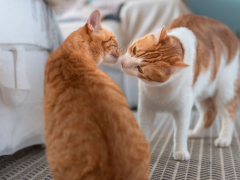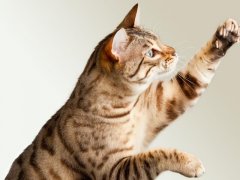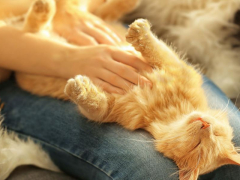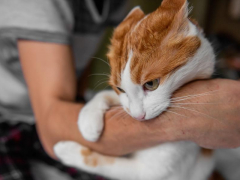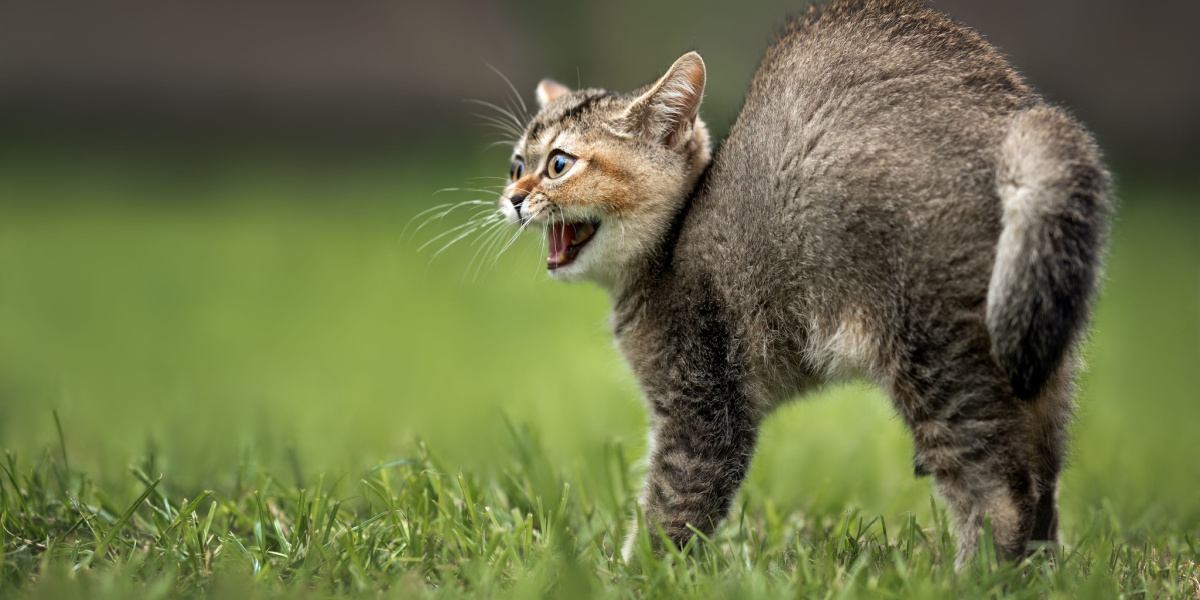
Cats are extraordinary creatures and those of us that share our lives with felines will be aware of just how acute their senses can be. They can sniff out food, spot the tiniest movement, and feel their way through the narrowest of spaces. Cats can sense many things, often much better than we can, but can they sense danger?
Although there is no evidence to suggest that cats have a sixth sense, this common misconception probably arises because cats have much sharper senses than we do. Read on to learn about the different ways in which your cat is able to sense danger.
1. Sight
Cats have excellent vision, particularly in dim lighting. In fact, cats can see six times better in dim light than humans can. One of the reasons for this is that cats have larger numbers of rod cells within their eyes than we do.
Rods are a type of photoreceptor cell that are sensitive to light, meaning that your cat can detect more outlines and movements in low lighting than you can. A cat’s pupils can also dilate wider than a human’s, which allows more light to enter the eye.
The Tapetum Lucidum
Cats have a structure within their eye that we do not have, called the tapetum lucidum. When light enters the eye, some of it hits the retina where the photoreceptor cells (rods and cones) are. When this happens, the information is processed by the brain and a visual picture is formed.
However, some of the light misses the retina, instead passing through or around the retina where it hits the tapetum lucidum. This acts as a tiny mirror and reflects light back through the retina, giving it a second chance at hitting the rod cells and allowing it to be processed by the brain. This is yet another reason why your cat can see better in dim lighting than you can.
2. Smell
A cat’s sense of smell is far superior to ours and that cute little nose contains far more scent receptors than our much larger noses do. The inside lining of a cat’s nose (called the olfactory epithelium) is approximately 20 centimeters squared. By comparison, a human’s olfactory epithelium is just 4 centimeters squared.
Cats are also far better at distinguishing between different smells than humans, and even dogs, are. The receptor in the nose that is responsible for differentiating between scents is called the V1R receptor.
Cats have 30 V1R receptors whereas dogs have nine and humans only have two. This allows cats to identify and differentiate between a much wider variety of smells. Unlike humans, cats can even smell pheromones.
The Vomeronasal Organ
Cats have yet another advantage over humans when it comes to smell. They have the ability to not only detect smells using their noses but also their mouths. The vomeronasal organ (also called the Jacobson’s organ) sits just behind a cat’s upper incisors on the roof of its mouth. A cat uses this to detect pheromones (chemical messengers) from other cats, as well as other animals, including you.
You might have seen your cat standing with their mouth partially open when they are using their vomeronasal organ to detect pheromones in the air. They might also curl their upper lip to pass as many scent particles as they can over the vomeronasal organ. This type of lip-curling is termed the flehmen response.
3. Hearing
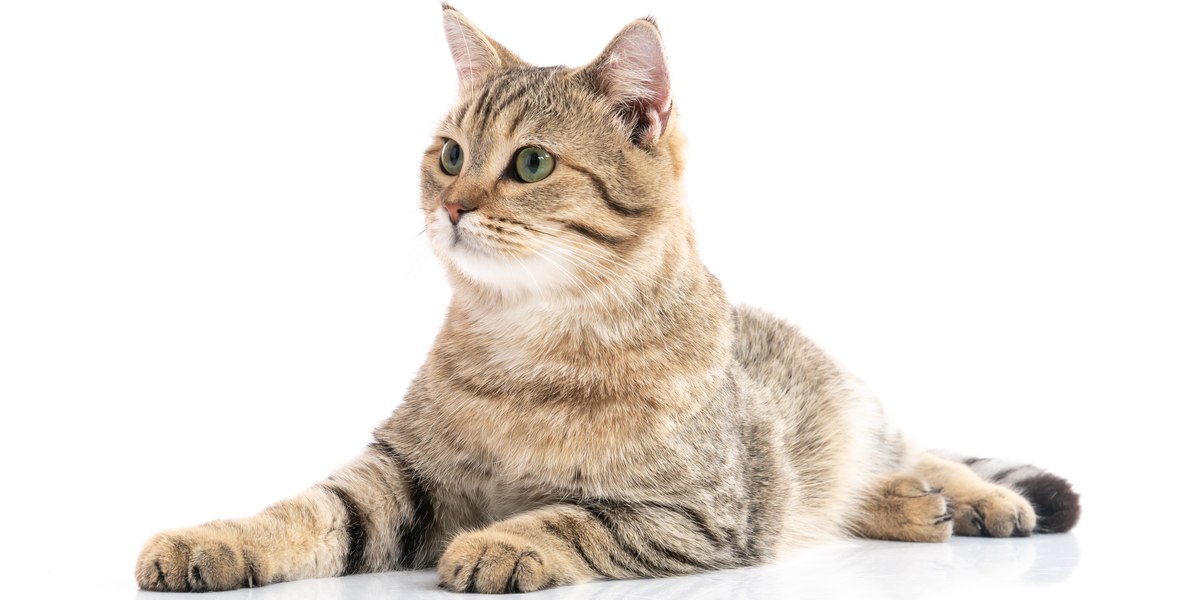
Cats detect sounds that humans cannot, and can move their ears like satellite dishes to pickup on sounds.
Yet another thing that cats do better than humans is hear a wider range and volume of sounds. Cats are extremely sensitive to sound and they can also hear better than most dogs can. They are able to rotate their ears up to 180 degrees which enables them to better locate the direction and position of a sound. Most humans cannot move their ears at all, although a few have the ability to wiggle them marginally.
There are 32 muscles in a cat’s ear that gives them the ability to move each ear backward, forward, and side to side, often completely independently of the other ear! Humans only have nine ear muscles so it’s no surprise that a cat’s ears are so mobile by comparison.
Cats can also detect frequencies well outside the range that humans can. The hearing range of cats is around 48 hertz to 85,000 hertz. Compare that to the human range of 20 hertz to 20,000 hertz and it’s understandable that sometimes your cat looks as though they have heard something even though you believe it to be silent.
4. Vibrations
Cats have the ability to detect tiny vibrations in the ground through their paw pads. Those little toe beans might look adorable but they also have an important function. A cat’s paw pads contain nerve endings called Pacinian corpuscles, which enable them to detect vibration frequencies between 80 and 240 hertz.
It has been suggested that cats can sense natural disasters such as earthquakes before they happen and there could be some truth in this. There is anecdotal evidence that cats start behaving oddly just before an earthquake. More research is needed to determine whether or not cats really are picking up tiny vibrations through the ground before an earthquake starts.
5. Taste
This is the one sense where human ability is superior to that of a cat. A cat’s sense of taste is nowhere near as good as a human’s. Cats have around 470 taste buds whereas humans have around 9,000. It is thought that cats lack the ability to taste sweet things.
However, a cat’s ability to taste bitter or sour things is excellent, something that helps them to avoid ingesting toxins or poisons that are often bitter-tasting.
6. Changes in Air Pressure
Cats’ whiskers (vibrissae) are extremely sensitive to not only touch but also changes in the environment, such as wind direction. They can even detect even small changes in air pressure and the atmosphere around them. The nerve endings at the tips of the whiskers then transmit this information to the brain where it is processed.
You might have seen your cat behaving strangely or vocalizing just before a storm. This is because they can sense the storm is coming before you can, thanks to their sensitive whiskers.
7. Fight or Flight
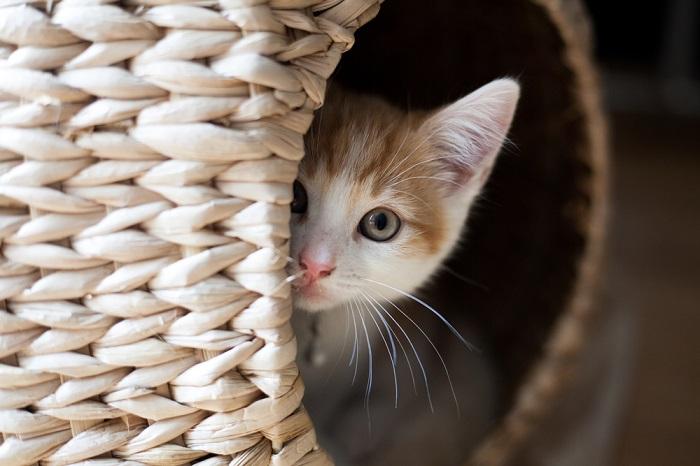
If they sense danger, cats are quick to run and hide—or face it to fight head-on.
With all of those heightened senses, it’s no wonder that cats are always on high alert. Cats are ready to react to a perceived threat and because of this, they sometimes get spooked by things that are actually harmless. Cat owners will be familiar with the sight of their cat springing into mid-air after a sudden loud noise and running for cover.
If a cat senses that a dangerous predator is nearby, they might prepare themselves to fight. Their body language will change to a defensive posture, usually crouched low to the ground with their hackles raised and claws at the ready. This fight or flight response aims to minimize the danger in the quickest and most efficient way possible.
Final Thoughts
Cats have a simply incredible sense of smell, sight, and sound, all of which are far superior to a human. This means that they are acutely aware of any potential danger, long before you will be. Their highly specialized senses make them skilled predators, but cats can also be prey to other, larger mammals.
This means that cats are often in a state of hyper-vigilance, on the lookout for not only prey but potential threats too. Danger to cats can come in all forms, from a bad weather system to another predator animal, but either way, cats can definitely sense danger in more ways than one.
Also Read: What To Do If Your Cat Chews On Everything
-
Shreve, K.R.V (2017). Stress, security and scent: The influence of chemical signals on the social lives of domestic cats and implications for applied settings. Applied Animal Behaviour Science Volume 187. Retrieved November 1, 2022
